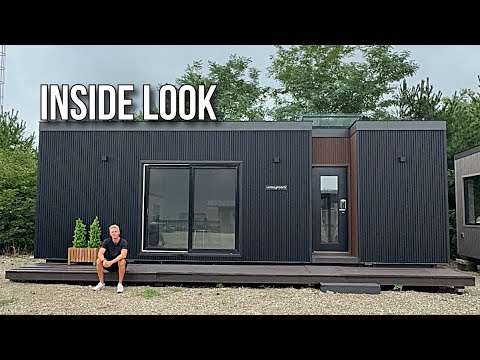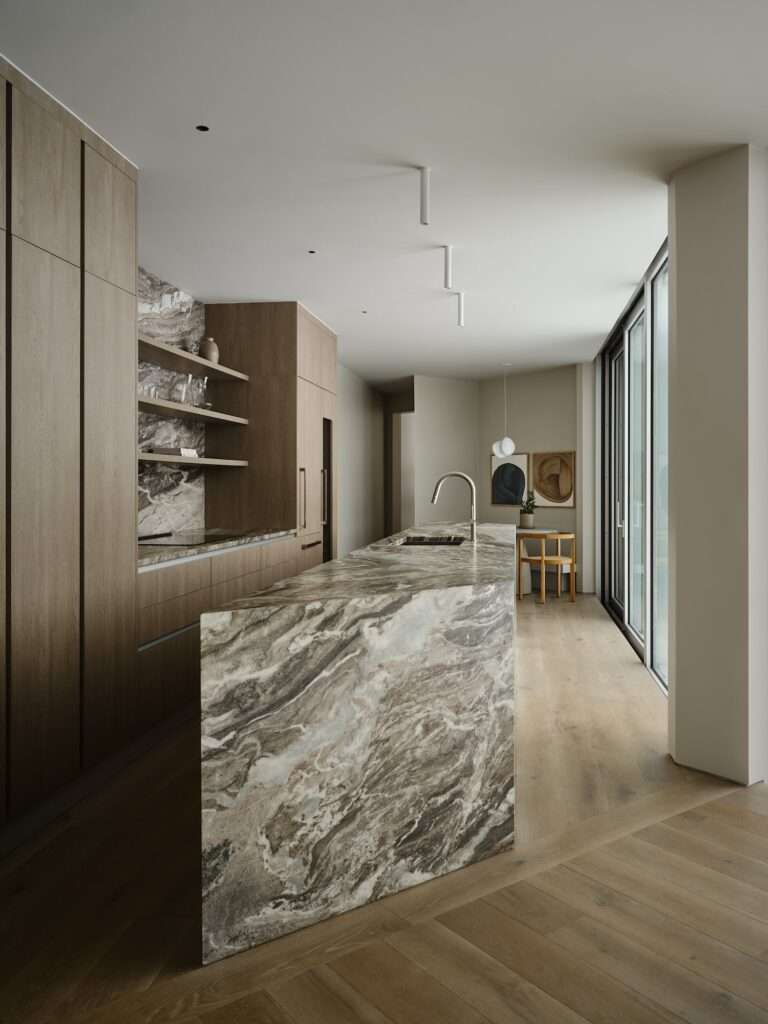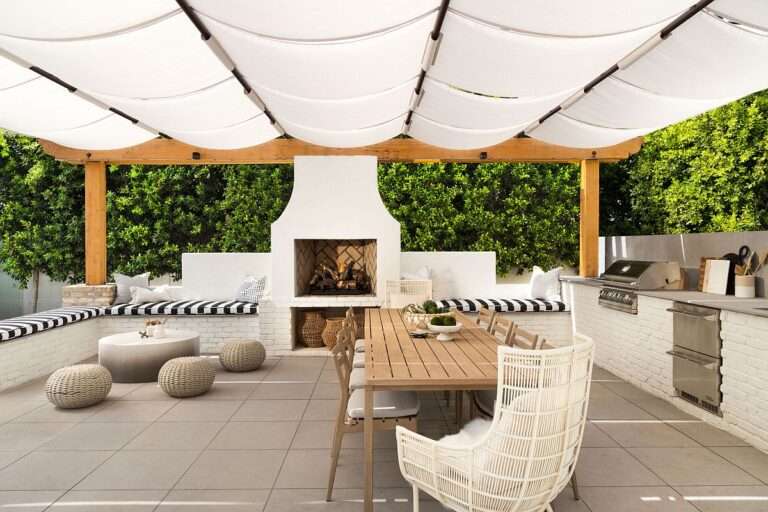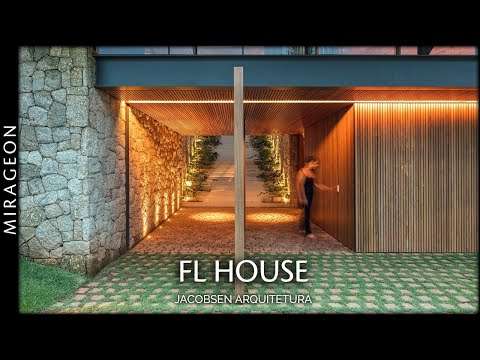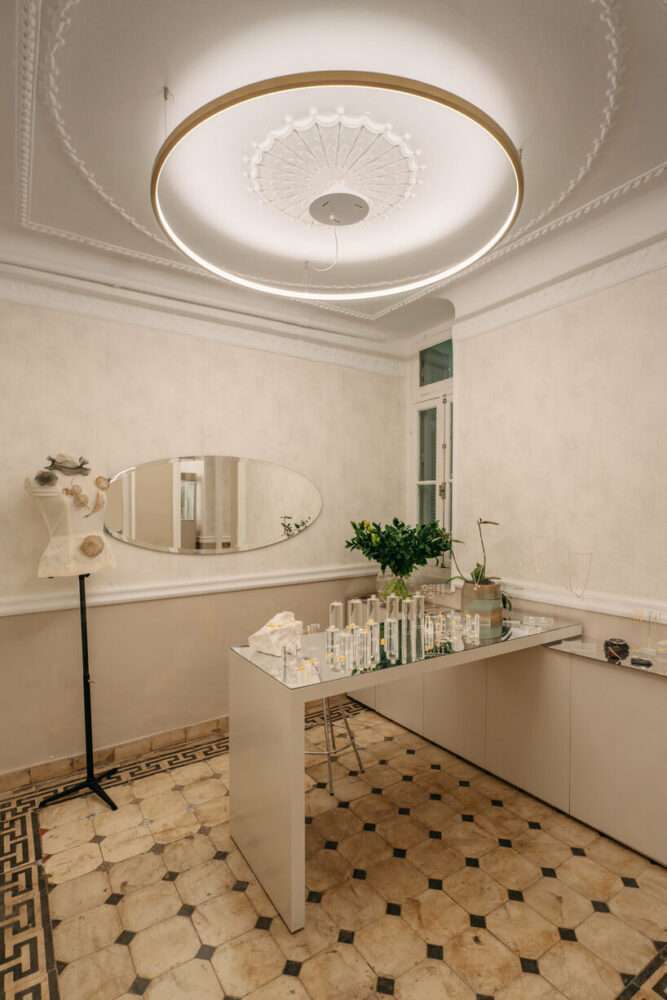Located in the rural town of Yackandandah, Victoria, Court House by Archier is a garden house that is built for clients who were returning to the town for a change of pace. As such, the clients wanted a passive house that was sustainable and could last for generations. Built on a prominent slice of land, Court House sits across from the public pool and just above the local courthouse – from which its name originates. However, with a road that runs around the outside of the family home, as well as being exposed to the elements, Court House came with some difficulties that were embraced by architects. Furthermore, the vegetation around the garden house is in differing stages of regrowth, which will eventually shield the architecture of the home from outside elements.
Organised around a rear entry, the home tour begins by entering in through the side of the garden house. Upon walking into the family home, the tour reveals a courtyard that the building is centred around and is the heart of the home. From the entry, the residence circulates around the courtyard with sliding doors that allow for the clients – who are avid gardeners – to enjoy an element of indoor-outdoor living. Additionally, shown through the garden house tour, the courtyard separates the design of the home, which places the kitchen, dining and sitting spaces on the northern side of the property, while all of the bedrooms are positioned on the southern side. Moreover, with the public spaces on one side and the private spaces on the other, Court House emphasises and balances the connection between community and retreat.
Drawing from the local palette, Archier has designed the exterior of Court House with timber and uses galvanised steel on the roof. Throughout the interior design, the team uses painted structural and insulated panels for the walls and a ceiling lined with local timber to create warmth. Floor-to-ceiling glass windows and concrete floors are heated up by the northern sun during the morning and the home features a heat recovery ventilation that allows the garden house to feel fresh and alive throughout the year. With the interior design and architectural details, Court House achieves the base level passive house rating and provides its owners with a smart and efficient building within which to spend their years.
00:00 – Introduction to the Garden House
01:19 – A Location Change and Generational Brief
01:51 – The Challenging and Exposed Site
02:27 – The Layout and Walkthrough of the Home
03:14 – Sustainable and Efficient Design
03:43 – A Local and Layered Material Palette
05:05 – Favourite Aspects and Fond Memories
For more from The Local Project:
Instagram – https://www.instagram.com/thelocalproject/
Website – https://thelocalproject.com.au/
Print Publication – https://thelocalproject.com.au/publication/
Hardcover Book – https://thelocalproject.com.au/book/
The Local Project Marketplace – https://thelocalproject.com.au/marketplace/
To subscribe to The Local Project’s Tri-Annual Print Publication see here – https://thelocalproject.com.au/subscribe/
Photography by Rory Gardiner.
Architecture by Archier.
Build by Sheringham Constructions.
Structural Engineering by Astleigh Consulting Engineers.
Geotechnical Engineering by B.M Civil Engineers.
Windows by BINQ.
Filmed by The Local Project.
Edited by Selina Mills.
Production by The Local Project.
Location: Yackandandah, Victoria, Australia
In Partnership with Squarespace | https://www.squarespace.com/
The Local Project acknowledges the Aboriginal and Torres Strait Islander peoples as the Traditional Owners of the land in Australia. We recognise the importance of Indigenous peoples in the identity of our country and continuing connections to Country and community. We pay our respect to Elders, past and present and extend that respect to all Indigenous people of these lands.
#Garden #House #TheLocalProject

